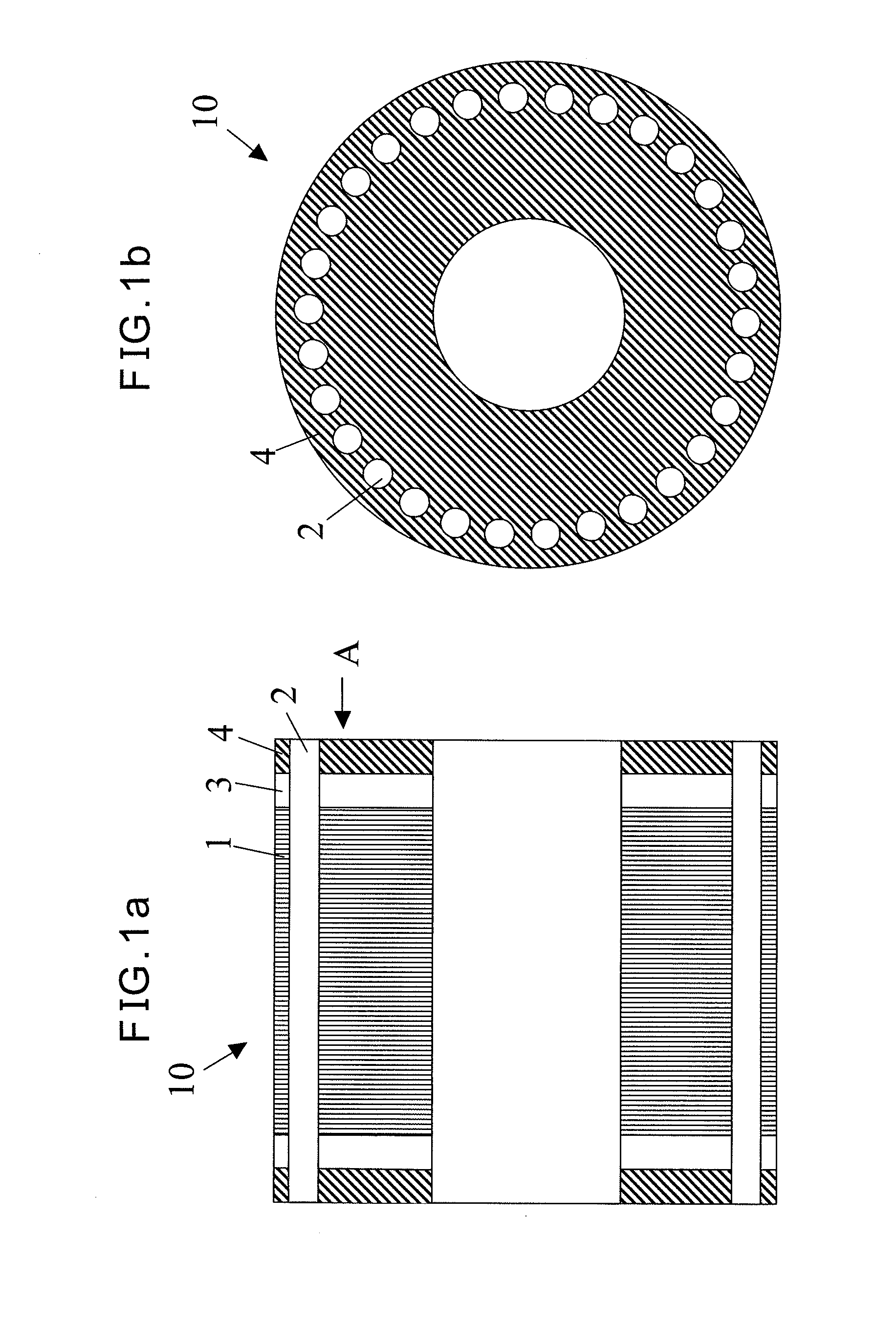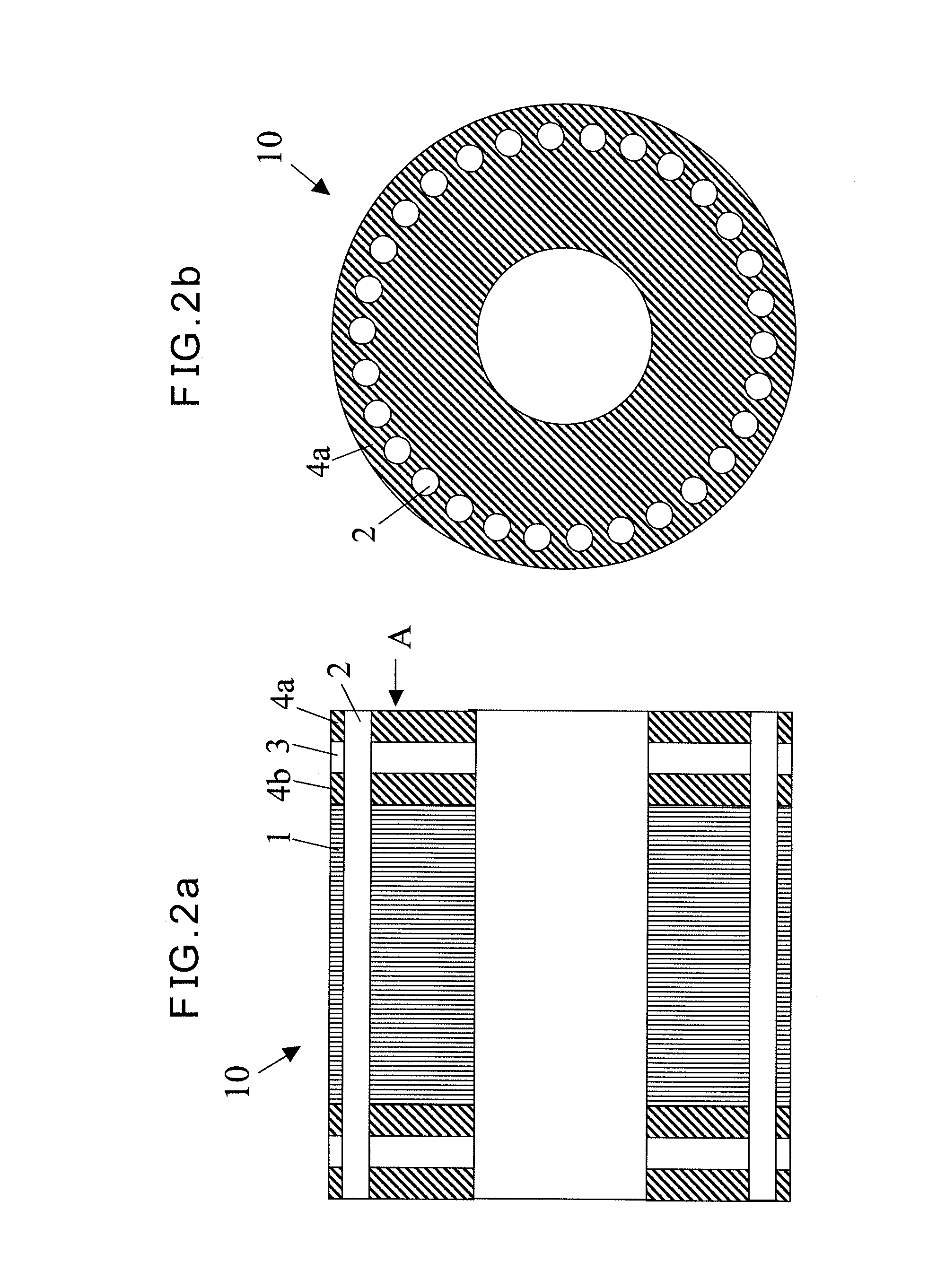Squirrel-cage rotor for induction motor
a technology of induction motor and rotor, which is applied in the direction of synchronous motors, dynamo-electric machines, electrical apparatus, etc., can solve the problems of reducing the strength of the rotor, requiring high power and low-calorific power, and difficult to adopt die-casting in the formation of the rotor's conductor parts from metal, such as copper or copper alloy
- Summary
- Abstract
- Description
- Claims
- Application Information
AI Technical Summary
Benefits of technology
Problems solved by technology
Method used
Image
Examples
first embodiment
[0027]FIG. 1a is a sectional side view of a squirrel-cage rotor in accordance with the present invention, while FIG. 1b is an end elevation view of the squirrel-cage rotor, viewed along an arrow A of FIG. 1a. The squirrel-cage rotor 10 shown in FIG. 1a comprises a rotor core 1. The rotor core 1 is formed by a normal material for a core of the squirrel-cage rotor 10, for example, a laminated body composed of magnetic steel sheets. The rotor core 1 has a plurality of slots (not shown) formed so as to extend in the axial direction thereof.
[0028]Conductor bars 2 made of copper or copper alloy are inserted into these slots, respectively. The conductor bars 2 have contours generally identical to the shapes of the slots, respectively. As shown in FIG. 1a, each of the conductor bars 2 is longer than the rotor core 1, so that both ends of each bar project from respective end faces of the rotor core 1, respectively.
[0029]As can be seen from FIG. 1b, according to one embodiment, thirty pieces ...
second embodiment
[0039]Thus, the conductor end ring 3 is sandwiched, from both sides thereof, between the first reinforcing-member end ring 4a and the second reinforcing-member end ring 4b. As shown in FIG. 2b, the first reinforcing-member end ring 4a is positioned outside the conductor end ring 3, while the second reinforcing-member end ring 4b is brought into contact with the rotor core 1.
[0040]Further, as shown in FIG. 2a, the respective conductor bars 2 penetrate through corresponding holes (not shown) of both the second reinforcing-member end ring 4b and the conductor end ring 3 and reach up to an outside end of the first reinforcing-member end ring 4a. As can be seen from the figure, respective end faces of the conductor bars 2 are generally in the same planes with the first reinforcing-member end rings 4a. However, both ends of each conductor bar 2 may project from the first reinforcing-member end rings 4a.
[0041]In the second embodiment, the conductor end ring 3 is sandwiched between the re...
PUM
 Login to View More
Login to View More Abstract
Description
Claims
Application Information
 Login to View More
Login to View More - R&D
- Intellectual Property
- Life Sciences
- Materials
- Tech Scout
- Unparalleled Data Quality
- Higher Quality Content
- 60% Fewer Hallucinations
Browse by: Latest US Patents, China's latest patents, Technical Efficacy Thesaurus, Application Domain, Technology Topic, Popular Technical Reports.
© 2025 PatSnap. All rights reserved.Legal|Privacy policy|Modern Slavery Act Transparency Statement|Sitemap|About US| Contact US: help@patsnap.com



